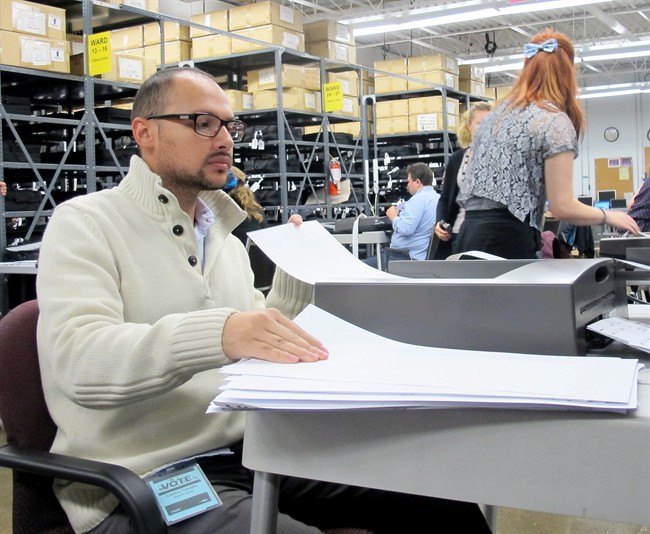TORONTO – Millions of people will be casting ballots in municipal elections across Ontario this month but nowhere is the organizational task more daunting than in Canada’s largest city, which will likely be the most closely-watched contest thanks to its infamous mayoral incumbent, Rob Ford.

Preparation for the October 27 vote are in full swing, including the testing of the tabulating machines that will be used and collating voting materials.
COMPLETE COVERAGE: Toronto Election 2014
“There’s a tremendous amount of planning that goes into an election of this size,” Bonita Pietrangelo, the city’s elections director, said Thursday.
“Getting the election message out to over 1.6 million electors is no small task.”
In all, 606 candidates are running for mayor, councillor or school trustee in an election that will cost an estimated $9 million.
While cancer forced the scandal-plagued Ford to pull out of the mayoral race, his brother Doug is one of 65 candidates vying to succeed him.
The ailing Ford, however, will be running in his ward, one of 358 candidates hoping to snag one of council’s 44 seats.
Unlike the fiasco of the recent New Brunswick election, officials in Toronto said they were confident the city’s 1,850 vote tabulating machines — different from those in the maritime province — would work properly and most results would be known within about 30 minutes of the polls closing.
READ MORE: Troubles with electronic voting machines aren’t rare, says expert
“We’ve used this equipment since the 2000 election, and we have had it work flawlessly since then,” City Clerk Ulli Watkiss said. “We have every confidence in our voting equipment.”
On voting day itself, eligible voters will be able to vote at 1,679 polling stations in addition to six days of advance voting that begins October 14.
Ensuring the vote runs smoothly involved a small army.
More than 15,000 people will be working election day and during advance votes, said Bonita Pietrangelo, the city’s elections director. “It takes a lot of people to make this event happen.”
About 2,300 bags containing more than two million supplies — such as rulers, tape, pens and pencils, ballots and voting lists — have been readied to ensure voters can exercise their franchise.
Officials have also been working to ensure the homeless, youth, and nursing-home residents can vote if they want to.
Accessibility has also been a primary focus, with special machines in place for disabled voters.
A website, www.toronto.ca/elections/myvote, has also been set up for people to get more information or see if they are on the voters list.
Key information is available in 25 languages, including Gujarati, Farsi and Arabic.

Comments